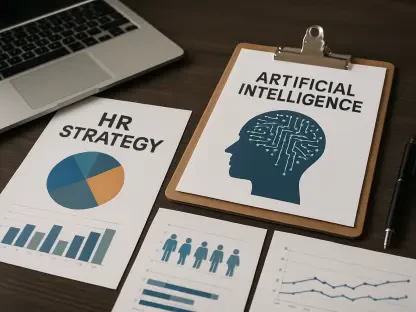The Department of Labor (DOL) has recently issued significant guidance on the use of artificial intelligence (AI) in employment. This guidance, titled “Artificial Intelligence and Worker Well-Being: Principles and Best Practices for Developers and Employers,” comes in response to President Joe Biden’s Executive Order 14110 on the Safe, Secure, and Trustworthy Development and Use of Artificial Intelligence, which was issued on October 30, 2023. The new framework outlined by the DOL is designed to benefit both workers and businesses, with a strong emphasis on workers’ rights, job quality, well-being, privacy, and economic security.
Key Themes in the Guidance
Worker Empowerment
In its guidance, the DOL stresses the importance of involving workers and their representatives, especially those from underserved communities, in the AI design and implementation process. This inclusion is essential to ensure their input and understanding are actively considered. Workers’ perspectives can offer valuable insights that developers might overlook, particularly regarding practical applications and potential impacts on day-to-day operations. The emphasis on underserved communities also aims to bridge potential equity gaps, ensuring that AI advancements do not exacerbate existing inequalities in the workplace.
Moreover, by incorporating workers’ feedback and concerns from the early stages of AI development, companies can foster a sense of ownership and trust among their employees. This, in turn, can lead to smoother implementation processes and greater acceptance of AI tools and systems. The guidance highlights that transparency and clear communication between employers, AI developers, and workers are crucial for cultivating this trust. Not only does this approach protect workers’ interests, but it also aligns with ethical AI practices, ultimately contributing to a fairer and more inclusive employment environment.
Ethical AI Development
Ethical considerations are at the heart of the DOL’s guidance, stressing the vital need for AI systems to be designed ethically to protect workers. The guidance underscores that ethical AI development involves not only adhering to legal standards but also incorporating moral values and principles such as fairness, accountability, and transparency. Developers and employers must ensure that AI systems do not perpetuate biases or cause harm to workers. This requirement includes careful scrutiny of data used to train AI models, as biased data can lead to biased outcomes, reinforcing existing discrimination and inequality.
Furthermore, ethical AI development necessitates ongoing assessment and monitoring to identify and mitigate any unintended consequences. It is crucial for employers to establish a governance framework that includes human oversight to review AI decisions and take corrective actions when necessary. This framework should be transparent and comprehensible, enabling workers to understand how AI decisions are made and challenge them if they appear to be unjust. The holistic approach to ethical AI development aims to create a balanced integration of AI in the workplace where technology enhances job quality and respects workers’ rights and dignity.
Guidance for Employers
Transparency and AI Governance
Transparency is a recurring theme in the DOL’s guidance, advocating that employers must be open about the AI systems used in the workplace. Clear communication regarding the purpose, functionality, and impact of AI tools is necessary for building employees’ trust and ensuring they feel informed and secure. Transparency involves disclosing how decisions are made using AI, the data sources involved, and the potential implications for workers’ roles and responsibilities. Employers should strive to present this information in an accessible manner, avoiding technical jargon that could obscure understanding.
Alongside transparency, robust AI governance is essential to maintain accountability and integrity in AI implementation. The guidance recommends establishing clear governance structures and procedures that outline the roles and responsibilities of stakeholders involved in AI oversight. This includes setting up committees or task forces with representatives from different sectors, such as HR, legal, IT, and worker advocacy groups, to oversee AI deployment and address any ethical, legal, or social concerns that may arise. Human oversight is a critical component of this framework, ensuring that AI decisions are reviewed and validated by individuals who can uphold ethical and legal standards.
Protection of Labor Rights
The DOL’s guidance firmly asserts that AI systems should not infringe on workers’ rights, including their right to organize, as well as various safety, wage, hour, antidiscrimination, and antiretaliation rights. AI systems must be developed and implemented with a clear understanding of labor laws and regulations to avoid violations that could harm workers or lead to legal repercussions. Employers are encouraged to collaborate with legal experts and worker representatives to ensure that AI tools comply with all relevant labor protections and contribute positively to the workplace environment.
To protect labor rights effectively, it is essential for AI systems to be designed with built-in safeguards that prevent misuse or abuse. This includes creating algorithms that do not unfairly penalize or discriminate against workers based on protected characteristics such as race, gender, age, or disability. Employers should also regularly audit AI systems to identify and rectify any biases or errors that may emerge during operation. By fostering a culture of continuous improvement and accountability, organizations can ensure that AI enhances, rather than undermines, workers’ rights and well-being.
Framework for Inclusive Hiring
AI & Inclusive Hiring Framework
In September 2024, the DOL released the AI & Inclusive Hiring Framework under the Partnership on Employment & Accessible Technology (PEAT). This framework is designed to help employers mitigate the risks of unintentional discrimination and accessibility barriers when using AI in hiring processes. Developed with input from a diverse array of stakeholders, the framework aligns with the National Institute of Standards and Technology’s (NIST) AI Risk Management Framework and offers ten focus areas to guide employers in adopting inclusive and risk-averse AI hiring practices.
The AI & Inclusive Hiring Framework is a practical tool for employers aiming to implement AI technologies without compromising on diversity, equity, and inclusion. By following the framework, organizations can identify potential biases in their AI hiring systems and take proactive steps to address them. This may involve revisiting data sets to ensure they are representative and free from discriminatory patterns, as well as incorporating feedback from diverse groups to refine AI algorithms. The framework emphasizes the importance of continuous evaluation and adaptation, recognizing that AI systems must evolve to meet the changing needs and expectations of a diverse workforce.
Supporting Workers Affected by AI
The DOL’s guidance also emphasizes the need to support workers who may be affected by AI-induced job transitions. This support can take various forms, including offering training and upskilling opportunities to help workers adapt to new roles or technologies. Providing resources for career development and job placement services can also assist workers in navigating the evolving job market. The goal is to ensure that the workforce remains resilient and capable in the face of technological advancements, rather than being displaced or disadvantaged by AI integration.
Employers have a critical role to play in facilitating these transitions and can benefit from establishing partnerships with educational institutions, training providers, and workforce development organizations. By investing in workers’ continuous learning and development, companies not only enhance their employees’ skills and prospects but also strengthen their own adaptability and competitiveness. This holistic approach to AI implementation underscores the importance of human capital and the need to balance technological progress with social responsibility.
Conclusion
The Department of Labor has recently published crucial guidelines on the application of artificial intelligence in employment settings. This guidance, named “Artificial Intelligence and Worker Well-Being: Principles and Best Practices for Developers and Employers,” responds to President Joe Biden’s Executive Order 14110, issued on October 30, 2023. The order emphasizes the safe, secure, and trustworthy development and use of AI. The DOL’s new framework aims to benefit both employees and businesses with a sharp focus on upholding workers’ rights, enhancing job quality, ensuring well-being and privacy, and improving economic security. These guidelines are intended to pave the way for a balanced approach where both AI technology can advance and workers’ fundamental rights and well-being are protected. This initiative underscores the importance of ethical AI deployment in the workplace, promoting a vision where technological progress and human dignity evolve hand in hand.









